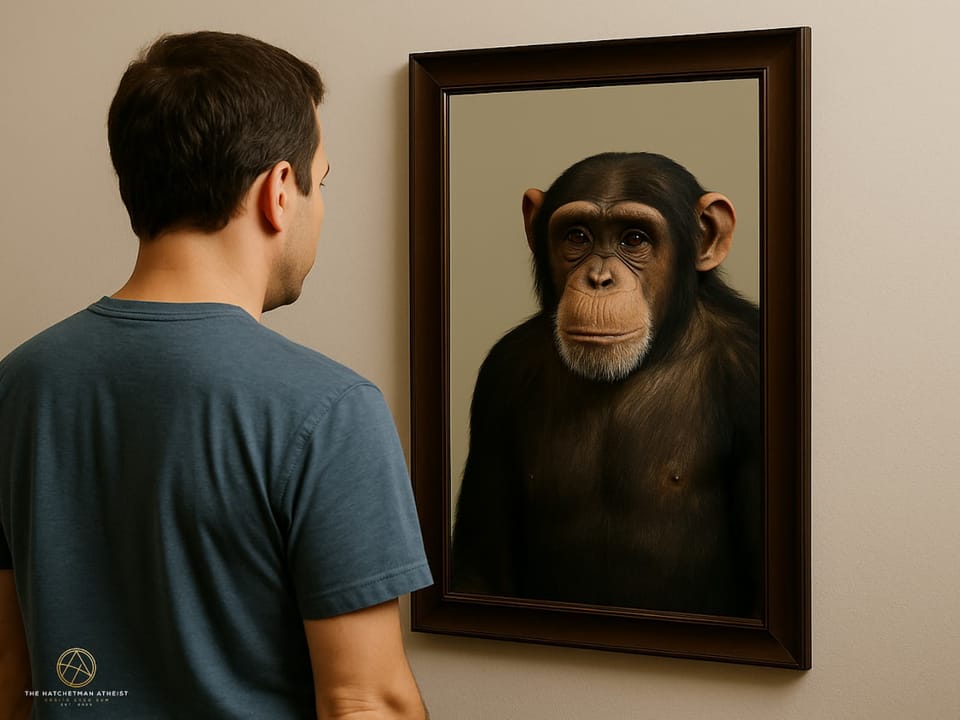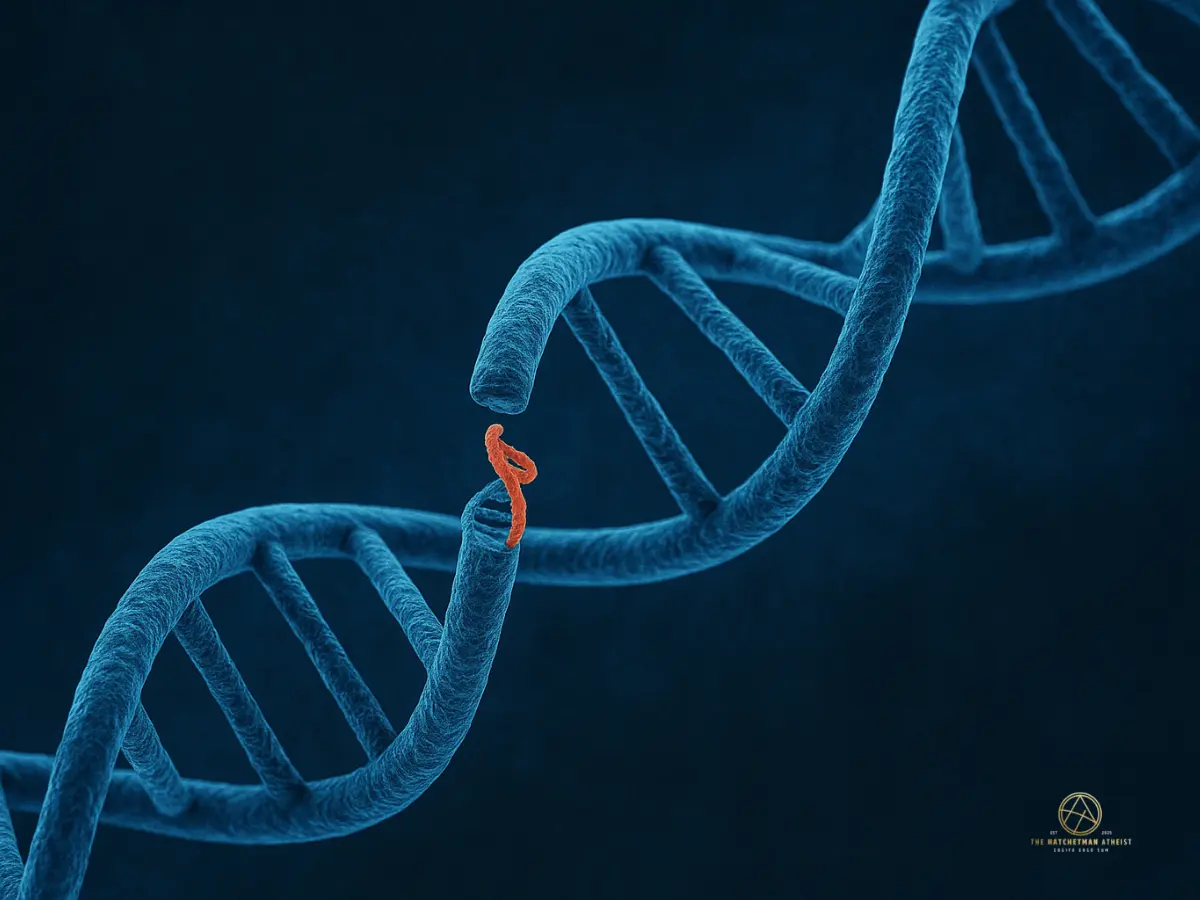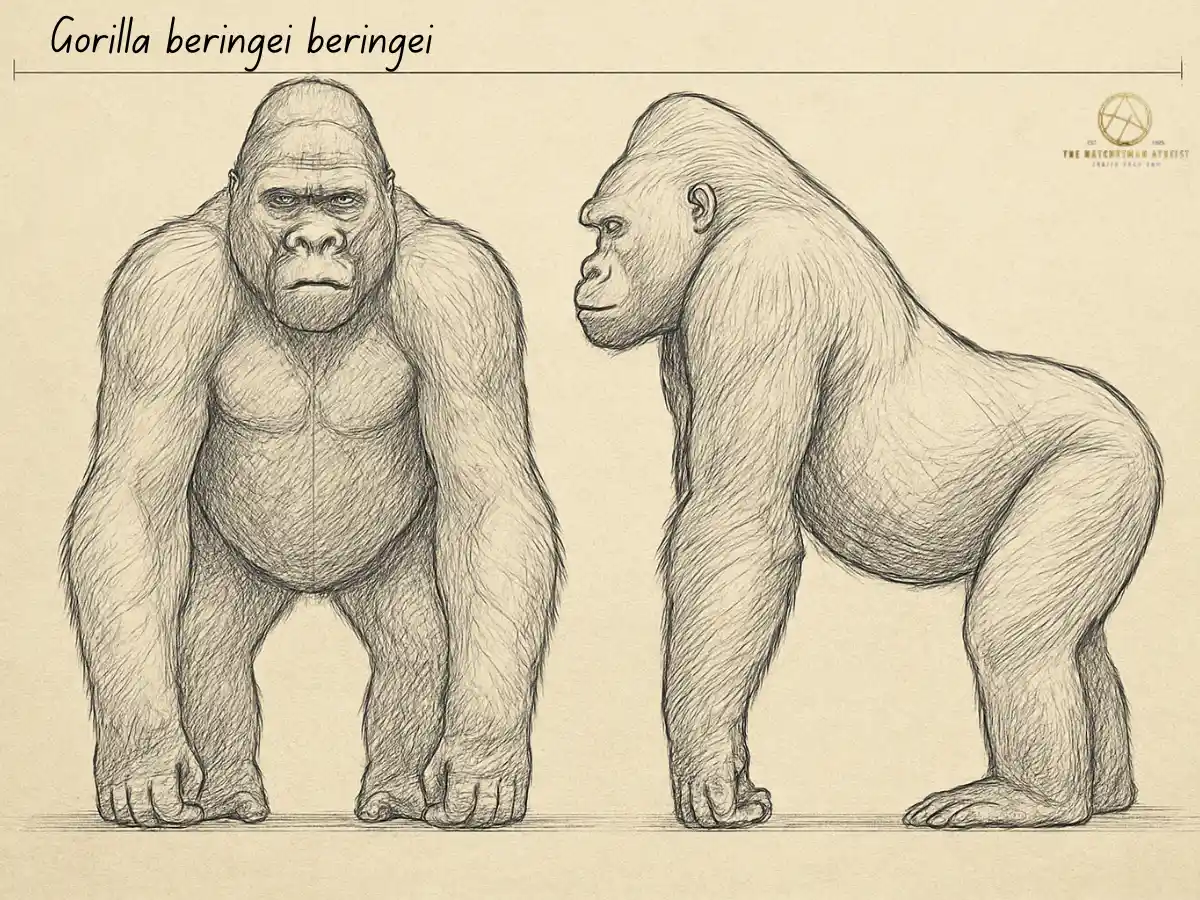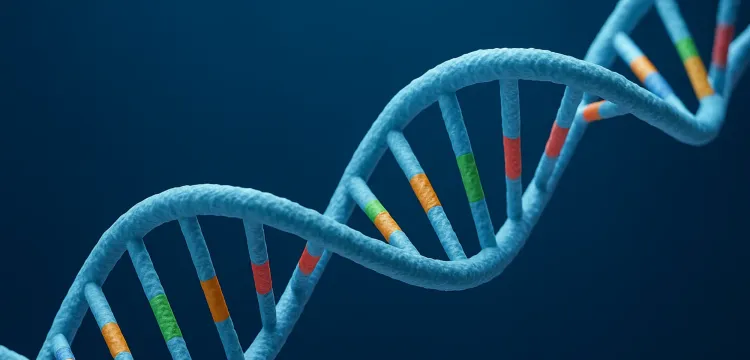Endogenous Retroviruses: A Powerful Proof of Evolution

Endogenous retroviruses (ERVs) are ancient viral sequences passed down in our DNA. When two species—like humans and chimpanzees—share the same ERVs in the same exact genomic locations, it's not a coincidence. It means those ERVs were inherited from a common ancestor. Scientists have found at least 16 such ERVs shared between humans and chimps, and the odds of that happening by random chance are about 1 in 10^92. That’s more unlikely than guessing the correct star in a trillion universes. Some ERVs are shared by all three species: humans, chimps, and gorillas. But there are none shared by gorilla and chimp or gorilla and human that aren’t also found in the third species. The pattern fits evolution perfectly and demolishes any claim that these viral insertions happened independently or were placed by design.
Endogenous Retroviruses: Ancient Echoes in Our DNA
Viruses are sneaky little things. They can't survive on their own, so they hijack living cells to make more copies of themselves. Retroviruses take it up a notch: they actually turn their RNA into DNA and sneak that DNA into your own genetic code. Usually, this only messes with one infected person. But once in a while, a retrovirus gets into a sperm or egg cell. That means it’s not just infecting you—it’s infecting your future kids. And their kids. And so on. Forever.
When that happens, the virus becomes part of the family tree. Literally. Its DNA gets passed down just like your eye color or blood type. These genetic leftovers are called endogenous retroviruses, or ERVs for short. And they’re not rare. In fact, about 8% of your DNA is made up of these ancient viral hitchhikers (International Human Genome Sequencing Consortium 871). Most of them don’t do anything anymore—they’ve mutated into gibberish—but they’re still there, like graffiti on the wall of your genome.
For a deep dive into chimpanzee DNA similarity click here
Why Randomness Matters: How ERVs Got Where They Are
When a retrovirus inserts itself into your DNA, it doesn’t aim for a specific spot. It’s more like tossing a dart at a massive dartboard. And your genome is a very big dartboard: around 3 billion base pairs long. Each base pair is like one rung on a very, very long ladder, and in theory, the virus could land just about anywhere.
So here’s the interesting part: if two different species both have the same viral DNA in the same exact spot, what are the odds that happened by chance? Not great. Actually, they’re so small it’s laughable. So when we see the same ERV in the same place in both humans and chimps, we don’t say, “Wow, what a coincidence.” We say, “These two species must’ve inherited that from a common ancestor.”
That’s why ERVs are such a big deal in evolution. They’re not just leftover junk—they’re timestamped fossils stuck in our DNA that show where we came from (Sverdlov 13).

for a beginner's primer on dna click here
ERVs as Breadcrumbs on the Evolutionary Trail
Scientists have found at least 16 ERVs that show up in exactly the same spots in both human and chimp DNA (Sverdlov 19). Not just vaguely similar ones—these are matching viral sequences lodged in matching locations.
So, how likely is it that this happened by dumb luck?
Even when we factor in that viruses don’t pick just any random spot and that they tend to aim for certain “hot zones” in the genome (Zhu et al. e1003959), the odds of one ERV showing up in the exact same place in two separate species is about 1 in 500,000. Still tiny. Now imagine that happening 16 times in a row. That’s a 1 in 10^92 chance. For context, that’s a one followed by 92 zeroes.
That’s not just unlikely—it’s effectively impossible. The only logical explanation is that those ERVs were already present in a common ancestor, and we both inherited them. It’s like finding the same birthmark in the same spot on two distant cousins—it didn’t pop up twice by accident.

A Three-Way Comparison: Humans, Chimps, and Gorillas
Now that we know how powerful ERVs are for tracing ancestry, let’s zoom out and bring gorillas into the picture. Gorillas, chimpanzees, and humans all come from a shared evolutionary branch—but how do their viral fossils line up?
Scientists have looked at dozens of ERV sequences across all three species. Here’s what they found:
- Some ERVs are shared by all three species—humans, chimps, and gorillas. That makes sense. These viruses likely infected a common ancestor that lived before the lineages split.
- Some ERVs are shared by humans and chimps only. That points to a more recent ancestor that humans and chimps shared after they’d already branched off from gorillas (Pace et al. 2016).
But here’s the kicker: there are no known ERVs that are found in just gorillas and chimps, or just gorillas and humans, without also being found in the third species (Pace et al. 2016).
In other words:
- No ERVs shared between gorilla and chimp that aren’t also in humans.
- No ERVs shared between gorilla and human that aren’t also in chimps.
That’s exactly what we’d expect if humans and chimps are more closely related to each other than either is to gorillas. It also rules out the idea that ERVs are popping up randomly in the same spots across species. These sequences aren’t accidents—they’re genetic time capsules, passed down in precisely the pattern evolution predicts.
Perspective from Outer Space
Want to get a sense of how ridiculous those odds are?
There are about 10^80 stars in the observable universe. That’s 1 followed by 80 zeroes. A mind-melting number. But even that’s small compared to the odds of 16 ERVs landing in the same spots by chance. You’d be more likely to randomly guess the exact star someone’s thinking of—in a trillion universes like ours—than to get that many matching ERVs by coincidence.
That’s why shared ERVs are considered some of the best genetic proof of common ancestry. They’re not vague. They’re not open to interpretation. They’re receipts—clear, permanent, impossible-to-fake records that we carry in our DNA, showing that we’re part of the same story as other primates.
Appendix
Before calculating the odds, it’s important to note that retroviruses do not insert randomly into all 3.2 billion base pairs of the genome. Instead, they show strong preferences for certain genomic “hotspots”—regions of open chromatin, active transcription, and specific sequence motifs. This reduces the number of viable insertion sites to approximately 10 million (Loewer et al. 441).
Additionally, insertion events are not laser-precise. Empirical data show that the same virus can insert in slightly different nearby positions—within a few base pairs—without significantly changing its biological effect. Therefore, when comparing insertions across species, we count any integration within ±10 base pairs of a reference point (a 20 base pair window) as a functional match.
This gives us a match probability of 1 in 500,000, based on:
- ~10 million possible insertion sites, and
- A ±10 bp matching window, or 20 positions that count as “identical”
Conservative Estimate (Hotspot + ±10 bp window)
- Odds of 1 match:
1 in 500,000 - Odds of 16 matches:
1 in 10^92
(That is a one with 92 zeroes after it)
(One in ten sexvigintillion)
Estimated Number of Stars in the Observable Universe:
10^80, That is a one with 80 zeroes after it
(One hundred quinvigintillion)
100,000,000,000,000,000,000,000,000,000,000,000,000,000,000,000,000,000,000,000,000,000,000,000,000,000,000
Number of Stars in 10^12 Universes:
10^92, That is a one with 92 zeroes after it
(Ten sexvigintillion)
10,000,000,000,000,000,000,000,000,000,000,000,000,000,000,000,000,000,000,000,000,000,000,000,000,000,000,000,000,000,000,000,000,000,000,000,000,000,000,000,000,000,000,000,000,000,000,000,000
FAQ: Endogenous Retroviruses, Human Evolution, and Shared DNA
What is an endogenous retrovirus (ERV)?
An endogenous retrovirus, or ERV, is a piece of viral DNA that got inserted into the genome of one of our ancestors and got passed down through generations. These are not modern infections—they’re ancient viruses that became part of our DNA millions of years ago.
How do ERVs get into our DNA?
ERVs come from retroviruses—viruses that can turn their RNA into DNA and insert it into the DNA of the host. If this happens in a sperm or egg cell, the viral DNA becomes permanent and gets inherited just like any other gene.
Are ERVs evidence for human evolution?
Yes. ERVs are one of the strongest pieces of genetic evidence for evolution. When two species, like humans and chimpanzees, have the exact same ERV in the exact same location in their DNA, it shows they inherited it from a common ancestor—not by chance.
How many ERVs do humans and chimps share?
Humans and chimpanzees share at least 16 ERVs that are inserted at the exact same locations in the genome. The chance of this happening randomly is astronomically low—about 1 in 1092.
Do humans share ERVs with gorillas too?
Yes. Some ERVs are shared between humans, chimps, and gorillas, which tells us these viral sequences came from an ancestor even further back. Interestingly, there are no known ERVs shared between just gorillas and humans or just gorillas and chimps that aren't also shared with the third species.
How much of our DNA is made of ERVs?
About 8% of the human genome is made up of endogenous retroviruses. That’s roughly 98,000 ERV sequences in total.
Are ERVs harmful to humans today?
Most ERVs are harmless—many are so old that they've mutated into inactive fragments. Some might play a role in regulating nearby genes, and a few have been linked to diseases, but overall they’re mostly genetic fossils.
Why are ERVs important in genetics and evolutionary biology?
ERVs are like natural timestamps in our DNA. They provide hard, physical evidence of common ancestry between species. They also help scientists understand how genomes evolve over time and how ancient viruses influenced our genetic code.
Is there any way ERVs could be explained without evolution?
There’s no testable, scientific explanation that accounts for ERVs better than evolution. The idea that identical viral DNA could appear in the same place in different species by design or coincidence doesn’t hold up when you calculate the odds or look at the pattern across the tree of life.
Where can I learn more about ERVs and shared DNA with chimps?
Search terms like “ERVs and common ancestry,” “human chimp shared DNA,” “genetic evidence for evolution,” or “why humans and apes share viruses in DNA” will lead you to articles, scientific papers, and videos explaining how this works. For deeper dives, try sites like Nature, PLOS Genetics, or publications by the NIH.
Works Cited
International Human Genome Sequencing Consortium. “Initial Sequencing and Analysis of the Human Genome.” Nature, vol. 409, no. 6822, 2001, pp. 860–921.
Loewer, Alexander, et al. “Genome-Wide Profiling of Retroviral Integration Sites.” Cell, vol. 123, no. 3, 2005, pp. 437–448.
Pace, Matthew, et al. “Comparative Analysis of Human and Great Ape Endogenous Retroviruses.” Journal of Virology, vol. 90, no. 19, 2016, pp. 8739–8749.
Sverdlov, Eugene D. Retroviruses and Primate Genome Evolution. Landes Bioscience, 2005.
Zhu, Yunlong, et al. “Precise Mapping of Retroviral Integration Hotspots by High-Throughput Sequencing.” PLoS Pathogens, vol. 9, no. 11, 2013, e1003959.





Comments ()